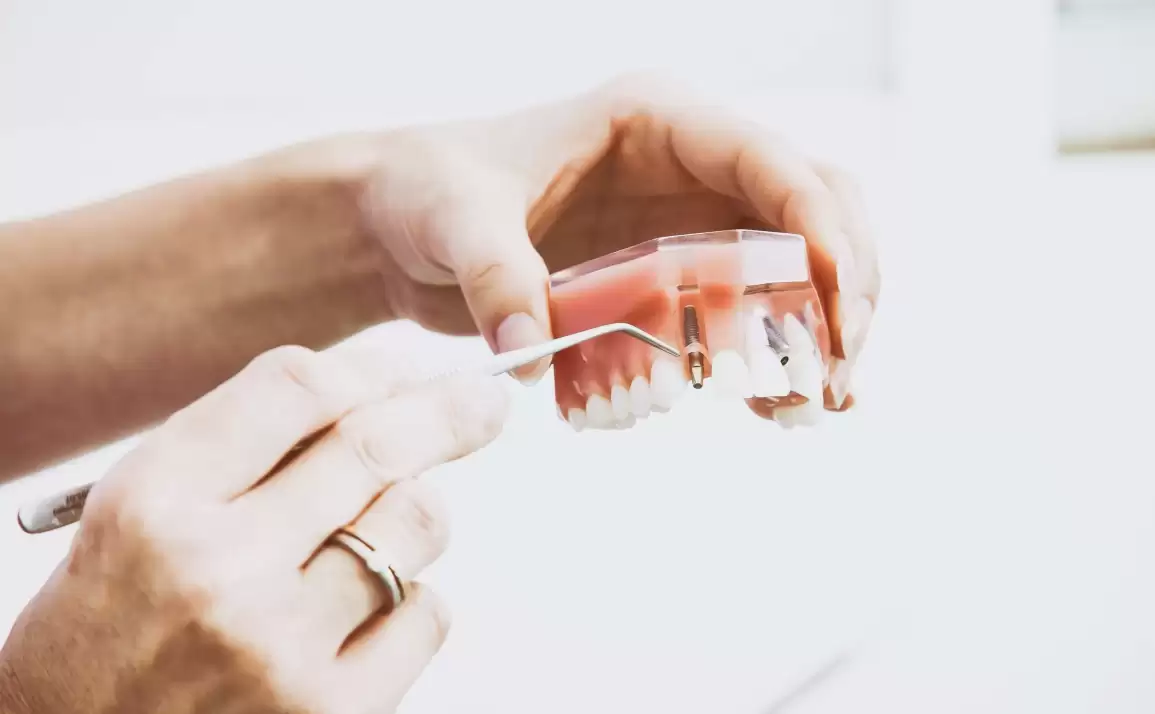Table of Contents
Dental implants have revolutionised modern dentistry, providing a durable and natural-looking solution for replacing missing teeth. At the heart of the success of dental implants lies a fascinating process called osseointegration. In this blog post, we will explore the intricacies of osseointegration, exploring its significance in dental implants surgery and why it is crucial for achieving long-term success and stability.
Understanding Osseointegration:
Osseointegration refers to the biological process by which a dental implant fuses with the surrounding bone tissue, forming a strong and stable bond. This process is essential for securing the implant in place and providing a solid foundation for the artificial tooth or teeth that will be attached to it.
The Process of Osseointegration:
Osseointegration begins immediately after dental implant placement and progresses over several months. During this time, specialised cells in the bone, known as osteoblasts, adhere to the surface of the implant and begin to deposit new bone tissue around it. This gradual integration of the implant with the surrounding bone results in a firm and stable connection, mimicking the natural attachment of teeth to the jawbone.
Importance of Osseointegration in Dental Implant Surgery:
Osseointegration is the cornerstone of successful dental implant surgery for several reasons:
- Stability and Functionality: A strong bond between the implant and the jawbone ensures stability and functionality, allowing the implant to withstand the forces of biting and chewing without shifting or loosening.
- Prevention of Bone Loss: Osseointegration helps preserve the integrity of the jawbone by stimulating bone growth and preventing resorption, which is common after tooth loss. This preservation of bone density is essential for maintaining facial structure and preventing further tooth loss.
- Longevity of Implants: Dental implants near me that undergo successful osseointegration have a significantly higher success rate and longevity compared to implants that fail to integrate properly. A well-integrated implant can last for decades with proper care and maintenance.
Factors Affecting Osseointegration:
While osseointegration is a natural and predictable process, several factors can influence its success:
- Bone Quality and Quantity: Sufficient bone volume and density are essential for successful osseointegration. In cases where bone density is compromised, bone grafting or other augmentation procedures may be necessary to ensure adequate support for the implant.
- Implant Design and Surface Texture: The design and surface characteristics of the implant play a significant role in promoting osseointegration. Dental implants Sydney with roughened surfaces or specialised coatings enhance the adhesion of bone cells and facilitate faster integration.
- Patient Health and Habits: Systemic conditions such as diabetes, smoking, and poor oral hygiene can negatively impact osseointegration. Patients who maintain good overall health and follow proper post-operative care instructions are more likely to achieve successful outcomes.
Achieving Optimal Osseointegration:
A dentist Melbourne employs various strategies to optimise osseointegration and enhance the success of dental implant surgery:
- Precise Surgical Technique: Experienced surgeons use precise surgical techniques to ensure proper implant placement and minimise trauma to the surrounding tissues, promoting faster healing and integration.
- Strategic Implant Loading: Controlled loading protocols may be implemented to gradually introduce forces to the implant after surgery, allowing for optimal healing and osseointegration without compromising stability.
- Patient Education and Compliance: Patient education is critical for promoting successful osseointegration. Patients must understand the importance of following post-operative care instructions, maintaining good oral hygiene, and attending scheduled follow-up appointments to monitor progress.
Conclusion:
Osseointegration is the foundation upon which successful dental implant surgery is built. This remarkable biological process allows dental implants to function and feel like natural teeth, restoring aesthetics, function, and confidence to patients with missing teeth. By understanding the significance of osseointegration and implementing strategies to promote its success, dental professionals can ensure predictable outcomes and long-term stability for their patients. With osseointegration as the key, dental implants continue to transform smiles and lives around the world, offering a permanent solution for tooth replacement that is second to none. Talk to our dentist to know more about the dental implants cost today.



